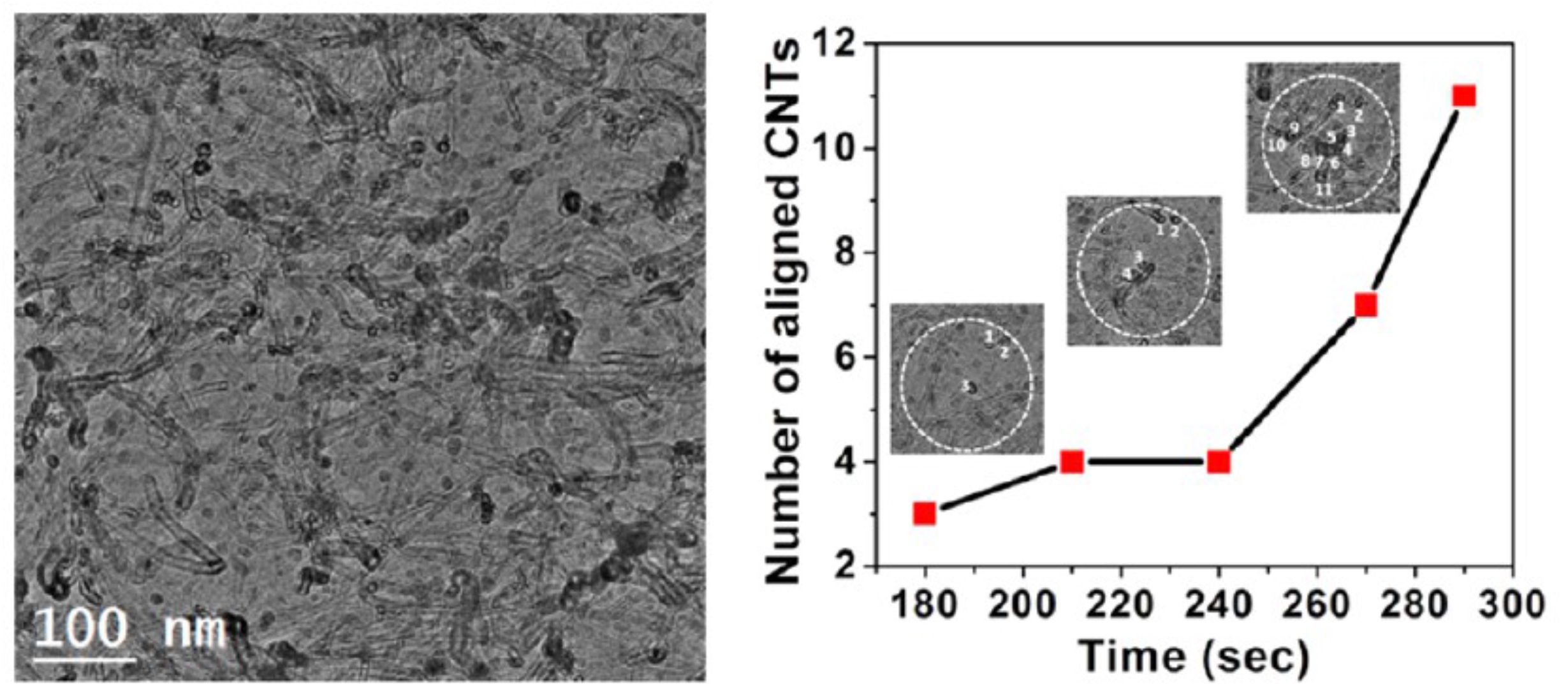
Year
2016Volume
10Issue
12Pages
11496–11504Abstract
The properties of carbon nanotube (CNT) materials, and many analogous materials comprising filamentary nanostructures, are governed by the intrinsic filament properties and their hierarchical organization and interconnection. As a result, direct knowledge of the collective dynamics of CNT synthesis and self-organization is essential to engineering improved CNT materials for applications such as membranes and thermal interfaces. Here, we use real time environmental transmission electron microscopy (E-TEM) to observe nucleation and self-organization of CNTs into vertically aligned forests. Upon introduction of the carbon source, we observe a large scatter in the onset of nucleation of individual CNTs and the ensuing growth rates. Experiments performed at different temperatures and catalyst particle densities show the critical role of CNT density on the dynamics of self-organization; low-density CNT nucleation results in the CNTs becoming pinned to the substrate and forming random networks, whereas higher-density CNT nucleation results in self-organization of the CNTs into bundles that are oriented perpendicular to the substrate. We also find that mechanical coupling between growing CNTs alters their growth trajectory and shape, causing significant deformations, buckling, and defects in the CNT walls. Therefore, it appears that CNT-CNT coupling is not-only critical for self-organization, but also directly influences CNT quality and likely the resulting properties of the forest. Our findings show that control of the time-distributed kinetics of CNT nucleation and bundle formation are critical to manufacturing of well-organized CNT assemblies, and that ETEM can be a powerful tool to investigate the mesoscale dynamics of CNT networks.






